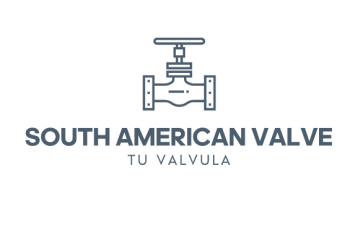In the complex world of plumbing and fluid systems, maintaining proper flow direction is essential for safety and efficiency. Imagine the chaos if water in your home suddenly started flowing back toward the source, or dangerous chemicals in a factory pipeline reversed direction. That’s where check valves come into play – the unsung heroes that ensure fluids move only in the way they’re supposed to.
What is a Check Valve?
A check valve, also known as a non-return valve or one-way valve, is a simple yet ingenious device. Its core purpose is to allow flow in one direction while automatically preventing flow in the reverse direction. This one-way traffic control is crucial in various settings, from residential plumbing to complex industrial processes.
How Do Check Valves Work?
The magic of check valves lies in their internal mechanism, which varies depending on the specific type:
- Swing Check Valve: These feature a hinged disc or flap that swings open when the fluid flows in the desired direction. If flow tries to reverse, the disc swings back and firmly seals against its seat, preventing backflow.
- Lift Check Valve: Here, a disc or piston is lifted against the force of gravity or spring when the pressure is sufficient in the forward direction. When the flow stops or reverses, the disc drops down onto its seat, creating a barrier against backflow.
- Wafer or Dual Plate Check Valves: These have two spring-loaded plates that form a seal in the center. When fluid flows forward, the plates open. Reverse flow forces the plates to close, blocking the flow.
What is Backflow?
Backflow is the undesirable reversal of fluid flow within a piping system. It can happen due to reasons like:
- Pressure changes: When pressure downstream exceeds upstream pressure.
- Siphonage: When a negative pressure zone pulls fluids in the reverse direction.
- Gravity: In vertical piping, gravity can cause fluids to flow backward.
Why is Preventing Backflow Important?
Backflow can have serious consequences, including:
Equipment Damage: Pumps, compressors, and other equipment are designed to handle flow in a specific direction. Backflow can damage them or reduce their efficiency.
Contamination: Backflow can contaminate clean water supplies, food products, or sensitive chemical mixtures, creating potential health hazards.
Water Hammer: Sudden halting of reverse flow can create immense pressure surges known as water hammer, leading to burst pipes and equipment failures.
Where Are Check Valves Used?
Check valves are found in numerous applications across various industries:
- Residential Plumbing: They prevent hot and cold water from mixing and ensure water from your house doesn’t flow back into the municipal supply.
- Industrial Processes: Chemical plants, refineries, and manufacturing facilities use them to protect pumps, prevent contamination, and maintain proper flow direction.
- Wastewater Treatment: Check valves to keep wastewater from flowing back into clean water lines, safeguarding the water supply.
- Irrigation Systems: They prevent water from draining and ensure sprinklers operate efficiently.
- Boiler Systems: Check valves to prevent backflow from the boiler into feed pumps and protect against pressure issues.
Check Valves: The One-Way Solution
Check valves are cleverly designed mechanical devices that allow fluids to flow in only one direction. They automatically open when the flow is in the desired direction and close tightly to prevent any reversal.
Choosing the Right Check Valve
Selecting the appropriate check valve depends on factors like the fluid type, line size, operating pressure, and temperature. It is advisable to consult with experts to ensure you choose the valve that best suits your system’s specific needs.
The Bottom Line
Check valves, while often overlooked, play a vital role in keeping fluid systems safe, functional, and protected from the dangers of backflow. Understanding their importance and how they operate is essential for anyone working with plumbing systems, whether at a residential or industrial level.
